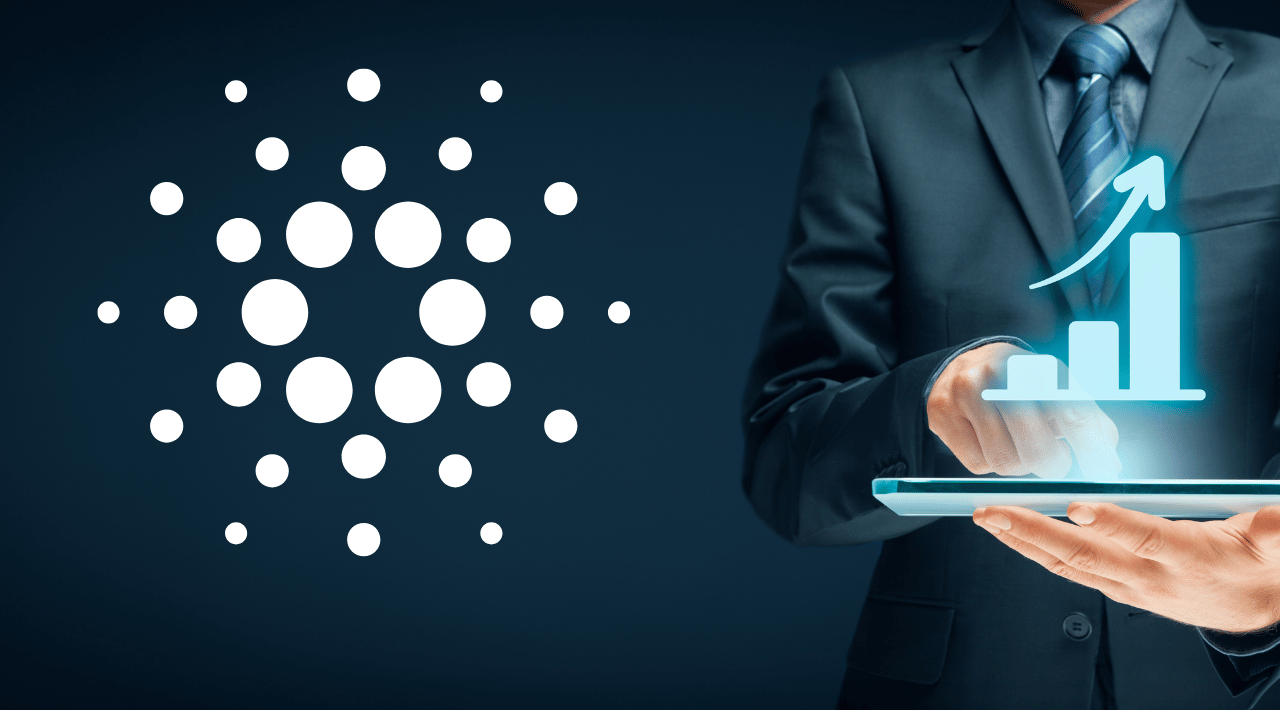The Evolution of Cardano's Technology and Features
Cardano has grown leaps and bounds since it was first introduced. How and when did its unique features come about?
Summary: Cardano is a third-generation blockchain network designed to be scalable, interoperable, and sustainable. The project is built using rigorous high-assurance formal development methods, with peer-reviewed research serving as its foundation. Cardano's strength lies in its openness and transparency, with all research and technical specifications being made publicly available. The project has been developed by IOHK and its partners, with the Cardano Foundation overseeing its ongoing development and Emurgo spearheading its commercial adoption. Cardano's ultimate goal is to become the preferred platform for large-scale, decentralized applications.
A pioneering blockchain network that utilizes proof of stake, Cardano has been further transformed into a decentralized application (dApp) development platform that boasts a multi-asset ledger and verifiable smart contracts. Its creation involved the use of rigorous high-assurance formal development methods, with the goal of attaining the scalability, interoperability, and sustainability necessary for real-world applications. Cardano aims to achieve all this by becoming the preferred platform for large-scale, critical dApps that could form the backbone of the future economy.
What Makes Cardano Special?
Unlike most crypto projects, peer-reviewed academic research serves as the foundation for Cardano. As a blockchain platform, Cardano places a considerable emphasis on openness and transparency. All research and technical specifications are made publicly available, and all Cardano development activity is proactively shared with the community.
Cardano remains one of the most promising cryptocurrency projects of this decade, as it is designed by certifiable experts in various fields, including distributed systems, programming languages, and game theory. The project is a joint collaboration between IOHK and its partners—the two most notable being the Cardano Foundation and Emurgo.
IOHK has developed the underlying technology, while the Cardano Foundation is responsible for overseeing the platform’s ongoing development as well as promoting the brand; Emurgo, meanwhile, is enthusiastically spearheading Cardano’s wider commercial adoption. On the whole, the Cardano team views themselves as custodians of the project during its continuous and ongoing development phases, with the ultimate goal of decentralizing the network and completely handing it over to the community.
When the network is fully decentralized, the community itself will ultimately decide the project's future trajectory through advanced governance features which will be thoroughly refined throughout the much-awaited Voltaire phase. And so a great starting point would be to ask: What are Cardano’s phases and what do they involve?
Phase 1: Byron (Foundation)
A third-generation blockchain, Cardano has been meticulously crafted using research, peer-review, and a rigorous formal development model. The project's roots trace back to the year 2015, when the team set out to tackle the three significant challenges confronting all blockchain networks: scalability, interoperability, and sustainability. Two years later, in September 2017, the initial version of Cardano was released to the world, marking the start of the Byron era.
In this initial iteration, Cardano enabled users to buy and sell the ADA cryptocurrency. The name ADA serves as a tribute to the world-renowned 19th century mathematician Ada Lovelace. Lovelace is generally recognized as the first computer programmer, and was the daughter of the poet Lord Byron—yes, the same Byron that Cardano’s first developmental phase is named after.
Her tireless and brilliant work set the early groundwork necessary for future computer programmers (feel free to check out one of the many great books written about Ada Lovelace). And her legacy proved instrumental in developing a federated network powered by the groundbreaking Ouroboros consensus protocol. Ouroboros, the centerpiece of the Cardano network, marks the first proof-of-stake protocol created on the basis of academic research, offering a mathematically-proven level of security.
During the Byron era, IOHK, Cardano's developer, introduced the Daedalus wallet, the project's official desktop wallet for ADA. Additionally, we saw Emurgo’s introduction of Yoroi, a light wallet designed for everyday use with support for facilitating quick transactions.
Aside from these crucial technological advancements, the Byron era was also about creating a community and involving individuals in developing the blockchain of the future. Cardano's global community has grown significantly since its inception, with ADA now being hosted on more than 30 exchanges and Cardano rising to a top position among altcoins. Cardano’s story, however, did not end in the Byron phase, as decentralization became the next ambitious goal.
Phase 2: Shelley (Decentralization)
Coming on the heels of the breakneck progress made during the Byron era, Cardano’s Shelley phase was a period of rapid expansion and progress for the network. Unlike the Byron era, which began with the launch of the mainnet, the transition to Shelley was about ensuring the implementation of a low-risk process for increasing systematic decentralization without inducing service interruptions.
During the Byron era, the network was federated, but in the Shelley era, more and more nodes were handed over to the Cardano community. As the growing number of network participants began running the majority of nodes, Cardano became more decentralized. This process was essential, as it has ultimately enhanced Cardano’s security and resilience.
In addition, the Shelley era introduced a delegation and incentive scheme, providing a reward system to drive stake pool adoption by Cardano wallet owners. As a proof-of-stake network, users stake their ADA to participate in the network—and this delegation and incentive scheme, designed using game theory and the latest research on proof-of-stake networks, encouraged users to delegate their stake to stake pools. Stake pools are always on community-run network nodes, and users are rewarded for their honest participation in the network.
Upon completing the Shelley era, Cardano had become about 50-100 times more decentralized than other major blockchain networks. The incentives scheme helped solidify an equilibrium of 1,000 stake pools, thus preventing exposure to malicious behavior and further enhancing decentralization. As a direct result of the hard work during this phase, Cardano now runs on a fraction of the power cost of equivalent proof-of-work blockchains, consuming the electricity equivalent to that of a single house.
The Shelley era represented a natural progression for the network, making it more useful, rewarding, and valuable to both new and existing users. It also prepared Cardano for the future, setting the stage for a fully distributed network and an entirely new application ecosystem with even greater developments to come.
Phase 3: Goguen (Smart Contracts)
Cardano’s next era represented a significant advancement in the network's overall capabilities: here we are talking about the introduction and integration of smart contracts. While the Shelley era focused on decentralizing the core system, Goguen added the ability to build decentralized applications (dApps) on Cardano's solid foundation of high-assurance development based on peer-reviewed research.
The work conducted during the Goguen phase began early on, even running concurrently with the Shelley era at times. Once completed, users from both technical and non-technical backgrounds were able to create and execute functional smart contracts on the Cardano network.
Plutus, a purpose-built smart contract development language and execution platform that uses the functional programming language Haskell, is one of the Goguen era's primary successes. Plutus became available for testing and simplified smart contract creation by bringing the benefits of functional programming to the process. It also allowed a single code base to support both on- and off-chain components, improving the coherency and usability of the development experience in comparison to existing smart contract implementations.
The Goguen phase also made Cardano more accessible to a wider audience through Marlowe, a high-level, domain-specific language (DSL) for financial contracts built on Plutus. Marlowe Playground, an easy-to-use application-building platform, simplified the process of creating smart contracts for financial applications, enabling subject matter experts to directly contribute without requiring deep programming skills. Together, Plutus and Marlowe have facilitated the creation of verified, enterprise-level smart contracts capable of underpinning large-scale implementations in the real world.
Apart from adding smart contract functionality, the Goguen era also improved the core Cardano offering. The multi-currency ledger extended the network's usefulness, enabling the creation of natively-supported tokens, both fungible and non-fungible. This ultimately allowed for the creation of new cryptocurrencies on Cardano and for the tokenization of various digital and physical assets.
The Goguen era oversaw a significant leap forward for the Cardano platform, enabling the development of mission-critical, decentralized smart contract applications. And yet, the Basho and Voltaire eras held even more exciting prospects for the network.
Additional Recommended Content
Phase 4: Basho (Scaling)
The era of Basho—the still-current Cardano development phase at the time of writing—marks a shift towards optimization, prioritizing scalability and interoperability of the network over decentralization and new functionality. The focus is now on enhancing the underlying performance of Cardano as it begins to accommodate high transaction volumes and the growth and adoption of applications.
A key development during the Basho era has been the introduction of sidechains—new blockchains that are compatible with the main Cardano chain, offering enormous potential to expand the network's capabilities. Sidechains can act as a sharding mechanism as well, relieving the main chain of excess work in order to increase network capacity; they can also be used to experiment with new features without jeopardizing the security of the main blockchain.
Another significant improvement we have seen rolled out in Basho has been the implementation of parallel accounting styles. While the main Cardano chain will continue to use the UTXO model, sidechains have been enabled for switching between UTXO and account-based models. This will promote greater interoperability and introduce new use cases for Cardano’s growing network.
Overall, the Basho era will stand as a seminal period in which we witnessed Cardano grow into a highly efficient, resilient, and flexible blockchain platform—which is to say, a network infrastructure equipped to sustainably scale and add new functionality while maintaining the reliability that was built into its core.
Phase 5: Voltaire (Governance)
The Voltaire era of Cardano marks the final stage in the network's evolution towards becoming a self-sufficient system. The introduction of a voting and treasury system will enable participants to leverage their stake and voting rights to shape the network's future development.
True decentralization of Cardano requires more than just a distributed infrastructure, as was established during the Shelley era; the network must also have the capacity to sustainably grow and improve in a decentralized manner. The Voltaire era will address this need by empowering participants to propose and vote on Cardano improvement proposals, using the existing staking and delegation process.
To support ongoing development, the Voltaire era will also establish a treasury system, whereby a portion of transaction fees will be pooled to finance future development activities following the voting process.
Once both the voting and treasury systems are in place, Cardano will be fully decentralized and no longer under the management of IOHK. As such, the network's future will be in the hands of the community itself, which will be equipped with the necessary tools to expand and refine Cardano based on the secure and decentralized foundation laid by IOHK.
If you have any questions or perhaps would like to contribute to our blog, please use the form on this website’s contact us page. Be sure to also check out our YouTube channel for sensational content covering all the latest happenings in the cryptocurrency world. If you are interested in growing revenue by joining an incredible affiliate network, make sure to visit our affiliate relations page to learn more about partnering with us!
Legal Disclaimer : The information provided on this crypto website is for educational and informational purposes only and should not be construed as financial advice. This website does not provide investment, legal, or tax advice, and the content provided is not intended to be relied upon for making financial decisions. Any investment decisions made by the reader based on the content of this website are solely their responsibility. This website does not endorse or recommend any particular investment, product, or service. The reader should always do their own research and seek professional advice before making any investment decisions. This website will not be held responsible for any losses incurred by the reader.
Conclusion: Cardano's evolution into a platform with a multi-asset ledger and verifiable smart contracts was achieved through high-assurance formal development methods. Cardano's team of certifiable experts in various fields, including distributed systems, programming languages, and game theory, meticulously crafted the blockchain network using research, peer-review, and a rigorous development model. With the ultimate goal of completely decentralizing the network and handing it over to the community, Cardano has already become about 50-100 times more decentralized than other major blockchain networks. As always, feel free to share your thoughts on Cardano and other trending cryptotopics in the comments section!









As the demand for bitcoin mining continues to grow, the deployment of nuclear-powered mining facilities could become an increasingly viable option—in addition to cryptocurrencies like Cardano, which don’t rely on mining at all.